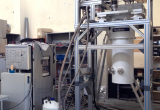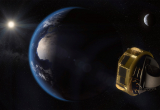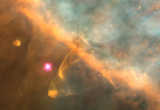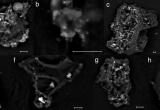IAS has a new and exciting arrival: a new mobile dilution cryostat has been built and delivered by BlueFors Cryogenics, allowing us to measure detectors and detection chain elements at sub-Kelvin temperatures. Irradiation of highly sensitive detectors by cosmic rays is a daunting problem for many space missions, and the IAS is among the laboratories that have been investigating this problem since the launch of Planck-HFI.
You are here
Archive
The European Space Agency's programme committee has just selected the ARIEL mission as the 4th intermediate class mission (budget 450 million euros) of the "Cosmic Vision" programme. ARIEL will be launched from the Kourou base in Guyana in May 2028 and will be placed in orbit at Lagrange L2, located 1.5 million kilometres from Earth. ARIEL is a space telescope that will systematically probe the atmospheres of a thousand extrasolar planets, from gas giants to rocky planets, whether hot or temperate around stars of different types. ARIEL will measure the composition and structure of planetary atmospheres, constrain the nature of planetary cores, detect the presence of clouds and study interactions with the host star.
With its observations in the middle-infrared range, the James Webb Space Telescope (JWST) is going to revolutionise our understanding of the Universe. After a competitive selection, its first observing targets have been unveiled. Over the hundred or so programmes proposed by researchers form all over the world, only 13 have been selected. One of them will be led by a collaboration involving IAS researchers.
A multidisciplinary team involving researchers from the IAS, CSNSM and SOLEIL SMIS/beam line, has characterized in the laboratory the organic component from exceptional organic-rich interplanetary dust particles, i.e. Ultra-Carbonaceous MicroMeteorites (UCAMMs).







